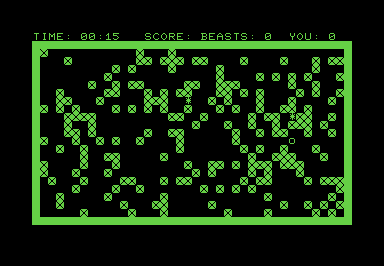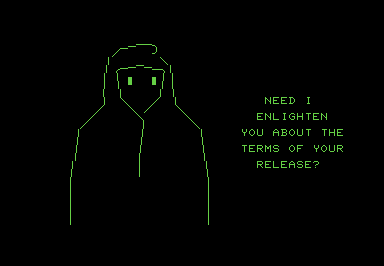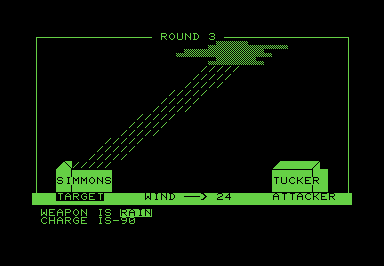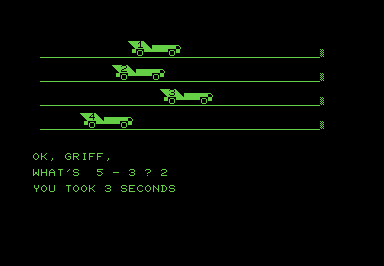CURSOR #21 – May 1980

COVER
Author: Stephen Pietrowicz
Original file name: COVER21!
PRG file: cover21.prg
This month's cover is called "The Cursor Chorus", which is a bit of a misleading title. "Chorus" means "many voices" but the standard PET can only sound one note at a time. The PET performs melodies from three Beatles songs: Yesterday, Hey Jude, and Michelle. Every time a note sounds, one of the singers opens its PETSCII mouth. The rhythm of the songs is a little wonky, but the pitches are surprisingly good in light of the CB2 sound's 8-bit pitch resolution. I'm always impressed by how much more in tune the PET is compared to the VIC-20 or Atari 2600.
The flyer gives Stephen Pietrowicz credit for the graphics but not the sound. That's such a specific way of
wording the credits that it makes me wonder if Glen Fisher or one of CURSOR's assistant editors, either
Dave Platten or Diane Grove, added music or changed what Mr. Pietrowicz submitted to the magazine. I've looked
over the REM statements in the program listing but couldn't find anything to tell me who was
responsible for which parts.
Pressing SPACE takes you to the table of contents for the issue.

CAPTURE!
Author: Malcolm Michael
Original file name: CAPTURE!
PRG file: capture.prg
CAPTURE! is a game where you try to evade two computer-controlled "beasts" in
a playfield of random blocks. You can push the blocks to try to trap the beasts; the block-pushing
mechanic is a bit like the one in the classic arcade game
Pengo.
This one moves quickly and is nearly impossible to play without a numeric keypad, so you'll want
to try this one on a real PET—or at the very least, an emulator on a machine with a full-sized
keyboard. Be careful when boxing the beasts in; they can move diagonally and may just slip through
the cracks and catch you.

DANCE!
Author: Bob Carr
Original file name: DANCE!
PRG file: dance.prg
DANCE! is a PETSCII animated cartoon by Bob Carr, who also wrote DROMEDA!
in Issue #18. In this short animation,
a group of Native Americans dance to fill the sky with clouds until one of them is struck by lightning,
an event which is received with thunderous applause. The lightning flashes are written in machine language
and are quite effective and the PETSCII landscape is beautifully crafted but otherwise, I wasn't terribly
impressed with this one. Quite aside from being culturally insensitive, this animation goes on for far
too long and not much happens. Boring.

BOSWAIN
Author: C. T. Nadovitch
Original file name: BOSWAIN
PRG file: boswain.prg
BOSWAIN has nothing to do with ships, even though the name looks a lot like 'boatswain'.
The first first time I loaded this game up, I saw the opening text and PETSCII graphics and thought I was
in for some sort of text adventure with an intriguingly dark atmosphere. Disappointingly, the game fails
to deliver on that promise—this is just a simple guessing game with a macabre theme. Each guess is
a binary choice (do you pick 'left' or 'right'?), and to win, you need to get 10 more right than you get
wrong. There's no strategy at all: just pick one choice or the other until eventually, you either win, lose,
or—more likely—tire of the game and move on to something else. If you do the math, the odds aren't
great that you'll arrive at a conclusive result one way or the other, so if you're going to play this one to
the bitter end, expect to waste a lot of time. I recommend loading this one up to watch the introduction
establish a mood and then putting it away again.

OURANOS!
Author: Kathy Higby
Original file name: OURANOS!
PRG file: ouranos.prg
This game should be called WEATHER WAR but the staff at CURSOR decided to call it
OURANOS instead because they had published a weather forecasting program called
WEATHER in
Issue #18.
"We couldn't just call it 'Weather'," they wrote. I'm guessing that they had an informal policy of giving
all their programs one-word names but on the PET/CBM, filenames can be up to 16 characters long and are
allowed to contain spaces. So, no, they couldn't just call it 'Weather' but there was nothing wrong with
the name 'Weather War'. I know that the version we had at my school had the title screen modified to read
WEATHER WARS (with an 's') and that's the name that I remember this game by.
OURANOS is a variation on the classic artillery/ballistics games that were so common in BASIC games collections. Two players take turns attacking their opponent's house with storms. Choose lightning, hail, rain, or a tornado; pick a "charge" (direction) for your attack; and be sure to account for the wind, which can skew your storm to the left or right. Every so often, the PET will fire off a random weather event which could damage either player's house.
The attack animations are a bit slow but even so I feel that the pacing of the game is about right. The lightning flashes light up the whole screen in machine language—a simple effect by today's standards but impressive for its time.
We played this one endlessly in school (even when we were supposed to be doing arithmetic drills) and it holds up well today. You can only play this as a two-player game because there's no computer opponent. If you've never tried this game, you need to. Immediately. Go find a friend and play this one.

DRAG
Author: Earl Furnman
Original file name: DRAG
PRG file: drag.prg
DRAG is an arithmetic drill program for up to four players. Each player has
to answer an addition or subtraction problem, and the faster they provide the correct answer
the further their car moves toward the finish line. This is a solid educational game although
I imagine there would have been a lot of jostling for position as four students try to share
the number keys on a single PET keyboard.
The flyer contains instructions for teachers, letting them know which program lines to modify in order to adjust the difficulty. Many teachers in 1980 would have been comfortable making these changes. Computer literacy often carried with it the expectation that everyone could learn BASIC and either write new programs or modify existing ones.
